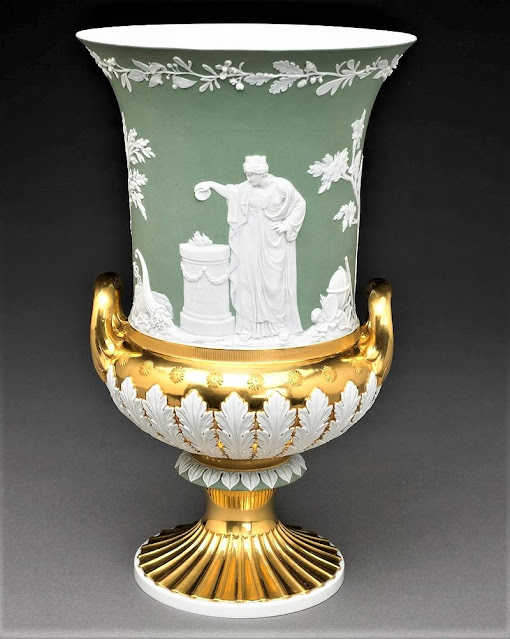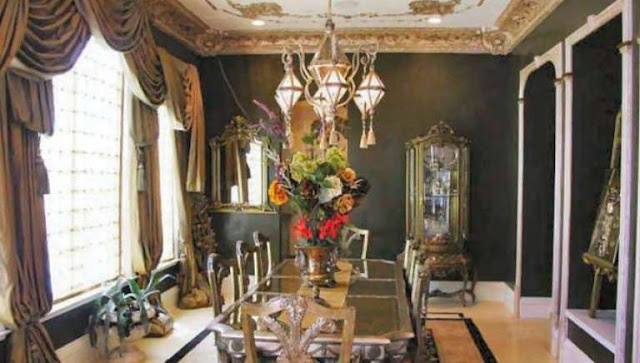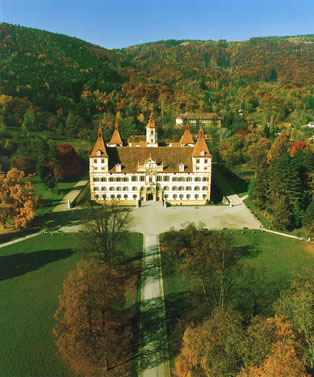Monday, July 31, 2023
The Vicarage at Nuenen Vincent van Gogh Date: 1885
The Vicarage at Nuenen
Vincent van Gogh
Date: 1885; Nunen / Nuenen, Netherlands
Style: Realism
Genre: landscape
Media: oil, canvas
Location: Van Gogh Museum, Amsterdam, Netherlands
Paul Helleu John Singer Sargent Date: c.1880
Paul Helleu
John Singer Sargent
Date: c.1880
Style: Impressionism
Genre: sketch and study
Media: pastel
Location: Fogg Museum (Harvard Art Museums), Cambridge, MA, US
Saint Ignatius of Loyola, Priest
Saint Ignatius of Loyola, Priest—Memorial
1491–1556
Patron Saint of the Society of Jesus (Jesuits), Spiritual Exercises, soldiers, and retreats
Canonized by Pope Gregory XV on March 12, 1622
Liturgical Color: White
Man is created to praise, reverence, and serve God our Lord, and by this means to save his soul. And the other things on the face of the earth are created for man and that they may help him in prosecuting the end for which he is created. From this it follows that man is to use them as much as they help him on to his end, and ought to rid himself of them so far as they hinder him as to it. For this it is necessary to make ourselves indifferent to all created things in all that is allowed to the choice of our free will and is not prohibited to it; so that, on our part, we want not health rather than sickness, riches rather than poverty, honor rather than dishonor, long rather than short life, and so in all the rest; desiring and choosing only what is most conducive for us to the end for which we are created. ~Principle and Foundation of the Spiritual Exercises of Saint Ignatius
Íñigo López de Oñaz y Loyola (Ignatius in Latin) was born at the Castle of Loyola in the municipality of Azpeitia, in modern-day Gipuzkoa, Spain. He was the youngest of thirteen children. Shortly after his birth, his mother died, and he was cared for by a local woman named Maria. When he was seven, his father died, and he was sent to live with a local noble family where he fulfilled the duties of a page, introducing him to the idea of knighthood and military service. As a result, Ignatius became an enthusiastic man who dreamed of being a great military officer. Captivated by thoughts of worldly honor and glory, he became a soldier around the age of seventeen. For the next twelve years he fought in many battles and advanced in rank. In 1521, at the age of thirty, Ignatius was wounded in battle and bedridden for months as his wounded leg healed. In his boredom, he asked for books to read. He had hoped to receive some books on chivalry and romance for entertainment, but no such books were in the house where he was recovering. Instead, he was given The Life of Christ by Ludolph of Saxony, a Carthusian monk, and Flowers of the Saints. As he read and re-read these two books, he began to be inspired and started to imagine himself living a saintly life.
 |
| The Vita Christi (Life of Christ), also known as the Speculum vitae Christi (Mirror of the Life of Christ) is the principal work of Ludolph of Saxony, completed in 1374. |
Ignatius also spent much time daydreaming about romance, chivalry, and other worldly endeavors. But since he was only in possession of these two books, his imagination would wander between the two: Christ and the saints, then romance and chivalry. But there was a difference. Ignatius noticed that even though both of these trains of thought excited him, the worldly thoughts eventually left him feeling dry and sad, whereas the thoughts about Christ and the saints left him inspired and enthused long after he had ended his daydream. It was this realization that first compelled him to intensify his conversion, and it was this insight that led to much of the wisdom that he would later leave to his followers and to the Church.
After his recovery, Ignatius desired to make a pilgrimage to the Holy Land. Before embarking on that trip, he first made a journey to the town of Montserrat. Two powerful influences on him during that time were his penitential practices and his thorough confession. For penance, he wore clothing that was rough and uncomfortable, tied a cord below his knee, and only wore one shoe. He spent much time in prayer and spoke to our Lord and our Blessed Mother while kneeling and standing for long periods. While in Montserrat, he spent three days preparing for a general confession of the sins of his whole life. During his confession, Ignatius also revealed to his confessor, for the first time, his intention to devote his entire life to the service of God. After his confession, he consecrated himself to our Lord and our Blessed Mother, and spent the entire night in prayer. Thus, Ignatius had begun a very radical journey toward a life of sainthood.
 | ||
| Cave of Saint Ignatius | Manresa, Spain |
After his short stay in Montserrat, Ignatius journeyed to the town of Manresa and stayed there from March 25, 1522, until mid-February 1523. His months in Manresa were months of deep conversion. He spent many long hours in prayer, attended daily Mass, engaged in severe penances, sought out spiritual counsel, and studied the Gospels. He spent much time in silence and solitude, especially in a cave that he frequented. Ignatius neglected his physical appearance and sought only to beautify his soul.
This period of interior formation had a profound impact on Ignatius, and he began to experience deep spiritual insights and consolations from God. However, soon after these consolations arrived, he also began to experience severe interior trials that left him agitated and struggling. These struggles began when he sensed the evil one saying to him that he could never keep up this life of vigor, zeal, and penance. The evil one tried to lead him to doubt and despair, but Ignatius ultimately discerned the voice of the evil one and rebuked his lies, reminding the evil spirit that he could offer him nothing of value. In the end, these trials were a gift in that they allowed Ignatius to grow deeper and deeper in his resolve to seek out and follow the will of God for his life while rejecting the lies of the evil one.
At this time, Ignatius also suffered severe scruples. He regularly recollected various sins he had committed that he feared he had never confessed. This struggle with scrupulosity caused much interior suffering. In fact, at one point, the scruples were so severe that he briefly considered suicide. In the end, God broke Ignatius free, once he was able to discern that his irrational thinking was not from God but from the evil one. Once he understood this, Ignatius rebuked and rejected these scrupulous and erroneous thoughts, and God freed him from this burden.
While in Manresa, Ignatius continued to engage in severe fasts (at one point neither eating nor drinking for seven days), scourged himself three times daily, and spent seven hours a day in prayer. Our Blessed Mother and Jesus regularly communicated with him, revealing deep spiritual truths to his soul. It was in Manresa that Ignatius began to write what has become one of the great spiritual classics in the Church: The Spiritual Exercises.
The Spiritual Exercises are not so much a book as they are a guide for a structured thirty-day retreat. The ideal way to accomplish this is for the individual to enter into silence and solitude for thirty days under the direction of a well-trained spiritual director who is able to lead the individual through the structure set forth by Saint Ignatius. This structure provides directions for what the retreatant should do each day, under the guidance of the spiritual director, as well as rules by which a director leads the directee toward discernment of God’s will.
After this period of prayer and the completion of the first draft of his exercises, Ignatius spent the next several years studying at Barcelona, Alcalá, and Salamanca where he also began promoting his new ideas. His writings, however, were scrutinized by the Spanish Inquisition, and he was briefly imprisoned a few times before being cleared of the charge of heresy. Afterward, he moved to Paris to obtain a master’s degree in theology, and it was there that he met Francis Xavier and Peter Faber, both of whom would later become saints.
In 1537, Ignatius and his companions moved to Venice and were ordained priests. Then in 1540, Ignatius, Francis, and Peter co-founded what would become the Society of Jesus, or Jesuits. The following year, Ignatius was elected the first superior, a role he would hold until his death. Over the next two decades, the Jesuits grew to an estimated 1,000 members, served in about thirty-five schools they founded, and became missionaries to non-Christian territories. Over the next century, the Jesuits played a significant role in the Catholic Counter-Reformation, becoming staunch defenders of orthodoxy and the pope.
Saint Ignatius of Loyola is one of the most inspirational figures in the history of the Church. He left behind a spiritual classic in The Spiritual Exercises, helped found the Jesuits who became one of the most consequential religious orders in the Church, and left behind other writings, including an estimated 7,000 letters filled with his wisdom. As we honor Saint Ignatius, ponder his initial conversion that led to so much good fruit. He noticed that God’s will produced a joy and peace that remained, versus worldly excitement that quickly passed and resulted in dryness. That insight has led countless people to discern God’s will for their lives through the use of Ignatius’ method. Ponder God’s will for your life today. As you do, learn from Saint Ignatius and seek that path which leads to great joy and ongoing spiritual peace and consolation.
Beluga whale
The beluga whale (Delphinapterus leucas) is an Arctic and sub-Arctic cetacean. It is one of two members of the family Monodontidae, along with the narwhal, and the only member of the genus Delphinapterus. It is also known as the white whale, as it is the only cetacean to regularly occur with this colour; the sea canary, due to its high-pitched calls; and the melonhead, though that more commonly refers to the melon-headed whale, which is an oceanic dolphin.
Cardinal Climber
Wedgwood style Meissen
Produced around 1818 in the Wedgwood style, this allowed the Meissen company to compete with its English counterparts, Birmingham Museum of Art.
Schloss Eggenberg, Luftaufnahme von Osten
Eggenberg Palace in Graz is the largest and most important baroque palace complex in Styria . With its preserved original furnishings, the extensive landscape garden and the collections of the Universalmuseum Joanneum housed in the palace, it is one of the most valuable cultural assets in Austria. As the ancestral seat of the Eggenberg noble family , its history of construction and furnishings shows the change and patronage of what was once the most powerful family in Styria. In 2010, the palace was added to the existing UNESCO World Heritage City of Graz - Historical Center and Eggenberg Palace .
The castle is located in the west of the provincial capital Graz at the foot of the Plabutsch mountain . In addition to the historic gardens and the state rooms of the palace, Eggenberg also offers the opportunity to visit the following collections: The planetary garden and the adjoining archeology museum are located to the north of the palace gardens. The numismatic collection and the Old Gallery are housed in the palace.
Cheers

-
Schloss Friedrichshof in Kronberg im Taunus, Hesse, near Frankfurt am Main, was built between 1889 and 1893 for the dowager German Empr...









.jpg)

















.jpg)
.jpg)
.jpg)
.jpg)












.jpg)






